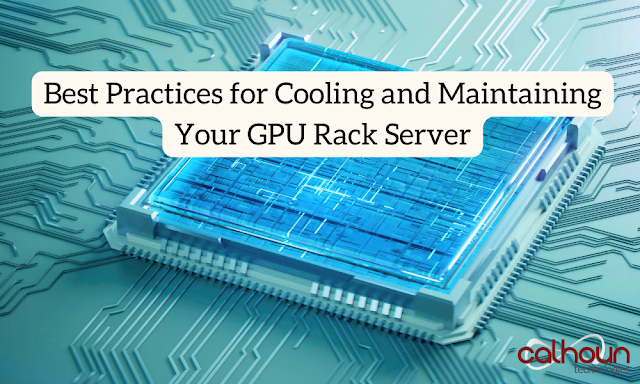Best Practices for Cooling and Maintaining Your GPU Rack Server
A GPU Rack Server is essential for high-performance computing, AI workloads, and deep learning applications. However, without proper cooling and maintenance, these powerful machines can overheat and degrade over time. To ensure longevity and efficiency, here are the best practices for cooling and maintaining your GPU Rack Server.
Importance of Cooling a GPU Rack Server
A GPU Rack Server generates significant heat due to its
high computational power. If not managed correctly, excessive heat can cause
performance issues, hardware failures, and increased energy costs. Proper
cooling helps in:
·
Preventing overheating and reducing hardware damage
·
Improving system efficiency and performance
·
Extending the lifespan of the GPU Rack
Server
·
Lowering energy consumption and operational
costs
Effective Cooling Strategies for Your GPU Rack Server
1. Optimize Airflow Management
Proper airflow management is crucial for maintaining the temperature of a GPU
Rack Server. Here’s how you can improve it:
·
Use Cold and Hot Aisle Containment:
Separate cold air intake from hot exhaust air to prevent heat recirculation.
·
Install Airflow Panels and Blanking
Panels: These help direct cool air efficiently and prevent hotspots.
·
Keep Cables Organized: Tangled
cables can obstruct airflow; use cable management solutions to enhance
ventilation.
2. Choose the Right Cooling System
Depending on the workload and environment, different cooling systems can be
used for a GPU Rack Server:
·
Air Cooling: Uses fans and
airflow management techniques to dissipate heat.
·
Liquid Cooling: Transfers heat
away from components more effectively than air cooling, making it ideal for
high-density GPU Rack Servers.
·
Immersion Cooling: Submerges
servers in a special cooling liquid, reducing thermal stress and improving
efficiency.
3. Monitor Temperature Regularly
Using monitoring tools helps keep track of temperature fluctuations in a GPU
Rack Server. Some effective monitoring solutions include:
·
Built-in Server Sensors: Many GPU
Rack Servers come with temperature sensors that provide real-time
data.
·
External Temperature Monitoring Systems:
These offer additional insights and alerts for overheating issues.
·
Automated Cooling Adjustments:
Smart cooling systems can automatically adjust fan speeds or activate liquid
cooling when necessary.
Essential Maintenance Tips for Your GPU Rack Server
1. Keep the Server Clean
Dust and debris can clog ventilation systems, causing overheating. Regularly
clean your GPU Rack Server by:
·
Using compressed air to remove dust from vents
and fans.
·
Checking and cleaning air filters.
·
Keeping the server room dust-free with air
purifiers if needed.
2. Update Firmware and Software Regularly
Ensure your GPU Rack Server is running efficiently by:
·
Updating firmware to optimize power and cooling
management.
·
Installing the latest software patches to
prevent performance slowdowns.
·
Using thermal management software to control fan
speeds and monitor temperatures.
3. Check and Replace Thermal Paste
Thermal paste helps improve heat transfer between the GPU and its cooling
solution. Over time, it can dry out, leading to inefficient cooling. Check and
reapply thermal paste every 1-2 years for optimal thermal conductivity in your GPU
Rack Server.
4. Maintain Proper Server Room Conditions
The environment where your GPU Rack Server operates plays a
crucial role in its performance. Ensure:
·
The room temperature is maintained between 18-27°C
(64-80°F).
·
Humidity levels are between 40-60%
to prevent static buildup and condensation.
·
Proper ventilation with HVAC systems is in place
to keep air circulation steady.
Conclusion
Proper cooling and maintenance are essential for the longevity and
efficiency of your GPU Rack Server. By optimizing airflow,
using the right cooling methods, monitoring temperature, and keeping the server
clean, you can ensure smooth and uninterrupted performance. Implementing these
best practices will help you get the most out of your GPU Rack Server
while avoiding costly repairs and downtime.



Comments
Post a Comment